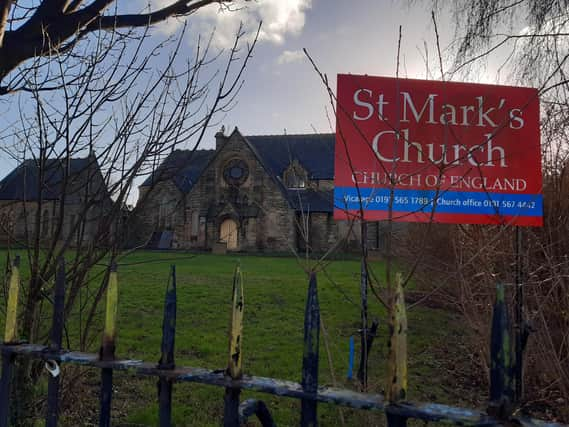Studio and work spaces approved for historic former Sunderland church


Plans to transform a vacant city church into studios and workspaces for local artists, organisations and start-up businesses have been given the green light.
Sunderland City Council’s planning department has approved an application for the Grade II-listed St. Mark’s Church off Hylton Road in the Millfield ward.
Advertisement
Hide AdAdvertisement
Hide AdA community association currently operates from the church hall on site, while the main church building is understood to have been vacant for several years.
The application from Pecorino Properties Ltd requested listed building consent for works to provide up to 12 studio/workspaces with an aim of securing a sustainable future for the historic church.
According to a design, access and heritage statement submitted to council officials last year, the plans proposed the removal of existing pews and pew platforms.
Advertisement
Hide AdAdvertisement
Hide AdHowever, applicants stressed the studio space works would be “light touch” and reversible and that the “most architecturally significant area of the church focussed on the chancel will be maintained”.
The large open space in the church is expected to be retained for private and public events, ranging from exhibitions and organ recitals to choral events.
After considering the planning application and assessing it against planning policies, Sunderland City Council’s planning department approved it on January 25, 2024.
Council planners noted the church was built in 1872 and contained “impressive internal features” including the timber roof structure and stained glasswork.
Advertisement
Hide AdAdvertisement
Hide AdA council decision report confirmed internal works would take place over several phases, starting with the removal of the existing pews and timber pew platforms to provide space to construct the studio spaces.
The studio spaces would include “lightweight timber stud/plasterboard partitions” with a “simple white paint finish”.
Council planners added the plans could be supported in principle, and would “return the currently redundant listed church to beneficial usage that should ensure it is sustained and conserved into the future”.
It was also noted that keeping unaltered open space around the chancel and sanctuary for meetings and events was a “positive aspect of the proposals” as it would retain views of the “most impressive features of the church”.
Advertisement
Hide AdAdvertisement
Hide AdAlthough it was acknowledged that the removal of the pews would have a “negative effect on the architectural and historic interest of the church”, the scheme was deemed acceptable on balance due to its public benefits.
This included “providing the church with a new use and sustainable future and helping to meet demand in the city for space for artists, craftspeople and small start-up businesses”.
Council planning officers also noted that the partitions were reversible and “could be easily removed in the future without causing any damage to historic fabric”.
The listed building consent application approval is a key step forward for the redevelopment of the Grade II-listed church.
Advertisement
Hide AdAdvertisement
Hide AdHowever, several other linked applications are currently awaiting decisions from Sunderland City Council’s planning department.
This includes an application for extra parking at the site to support the new studios and events space, as well as a separate bid for a new security fence between the church and church hall.
There has also been an application for a ‘certificate of lawfulness’ to convert the church into a building “providing a venue for community education, arts exhibitions and programming”, with a decision expected later this year.
A design, access and heritage statement from applicants said the church closed for worship in January, 2021, due to “low congregation numbers” and has been vacant since.
Advertisement
Hide AdAdvertisement
Hide AdIt was argued that the studio space scheme was needed to “bring the building back into use very quickly and prevent further deterioration”.
The design, access and heritage statement added: “The applicant has a demonstrable track record for provision of similar studio spaces within the city.
“They are aware that further demand is available for the space that would be created by the development.
“They have a business model which would allow them to finance the development of the studio spaces and ensure the long-term future of the building”.
For more information on the listed building consent application for the church, visit Sunderland City Council’s planning portal website and search reference: 23/02490/LBC